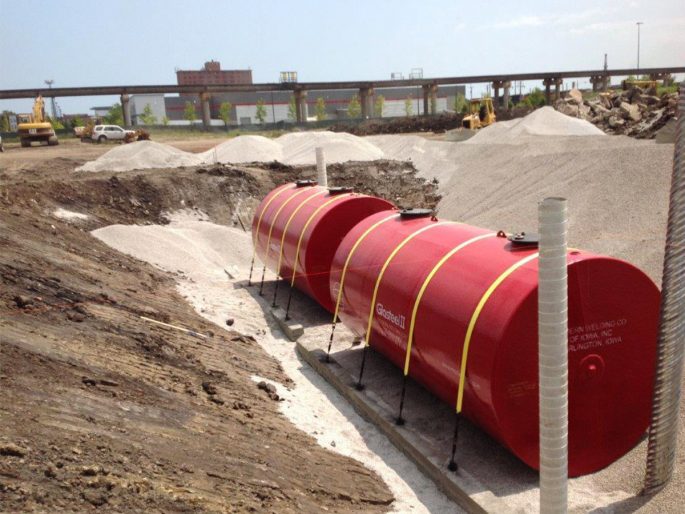A substantial wave of underground storage tank replacements will occur in the next 10 years as many tanks are nearing the end of their warrantied service life. Tank replacement is a major investment – in equipment, construction costs and downtime. To prevent unwelcome surprises, complete the following actions before and after UST installations.
BEFORE INSTALLATION
A substantial wave of underground storage tank replacements will take place in the next 10 years as many tanks are nearing the end of their warrantied service life. Tank replacement is a significant investment – in equipment, construction costs and downtime. To prevent unwelcome surprises, here are things fuel site operators should think about before and after UST installations.
- Revisit your state’s UST regulations and any pending revisions that may be in the rule-making process to identify rules that require specific equipment or lead to reoccurring labor and maintenance costs. Discuss these issues with your Source representative, who will be able to present product solutions that address them. To review your state’s UST regulations, visit www.sourcena.com/state-by-state-guide/.
- Familiarize yourself with the unique benefits of fiberglass and steel, and take note of advancements that may help prepare your UST system for the fuels of the future. Consult with your Source representative to learn what prevention solutions might help eliminate the early replacement of damaged or failing UST components. Learn more about the advantages of fiberglass at www.fiberglasstankandpipe.com and the benefits of steel at www.steeltank.com.
- Collaborate with your representative to develop an itemized list of potential costs for different types of USTs. Ask about:
- Related equipment for USTs (such as anchoring systems and cathodic protection
- Backfill
- Equipment failure rates
- Known maintenance issues and potential insurance costs/savings
- Warranty length, terms and stipulations
DURING INSTALLATION
Fuel marketers need to remain involved in their UST installations. The U.S. Environmental Protection Agency urges fuel site operators to “make sure that installers carefully follow the correct installation procedures called for by manufacturers’ instructions and industry codes.” Fuel site personnel should regularly communicate with contractors during tank installations to promote job-site safety and to document important details about the installation. Here are five actions to take:
1. Inspect and test tanks when they arrive at the fuel site to ensure the warranty is not voided by damage that may have occurred during shipping. Take photos to document the condition of the tank.
2. Ballast tanks with water, not fuel. If fuel is pumped into a UST, the tank becomes subject to UST regulations and it needs to be covered by insurance. Do not ballast tanks using a high-pressure hose, which may damage the tank and void the warranty.
3. Confirm that contractors dug the correct sized hole for the USTs. If the hole is too shallow, the new tanks may not be sufficiently protected from the weight of traffic driving over the tanks. If the hole is sloped more than it needs to be, more backfill will be required to fill the hole. This will increase expenses.
4. Create a “UST Birth Certificate.” Prior to the excavation site being back-filled, create a “UST birth certificate.” Click here to learn why this step is so important, and to download a free form to get you started.
5. Confirm that the appropriate type of material (as specified by the tank manufacturer) is being used to backfill the tank. Proper backfill is critical to long-term performance of USTs. Different types of backfill look similar — this detail could easily be overlooked by a distracted (or dishonest) contractor. Observe the process of packing the backfill around the tank to ensure the material is evenly distributed and no voids are created.
AFTER INSTALLATION
There are several follow-through steps operators must complete after the UST is installed, including:
1. Finalize the UST’s certification and financial responsibility requirements. Complete the EPA’s Notification for Underground Storage Tanks form and submit it to the designated local or state agency.
2. Fuel site operators need to demonstrate that components in the UST system are approved by either the manufacturer or by a nationally-recognized independent testing laboratory for use with the fuel being stored in the tank. Learn more about compatibility in the EPA’s June 2019 Compliance Advisory titled Underground Storage Tank Regulation.
3. Update UST birth certificates as maintenance and upgrades dictate changes to the equipment.
4. Develop a long-term savings plan to cover the expenses of future UST replacements. Although the current wave of UST installations may seem expensive, the next wave will likely cost even more. Begin saving immediately to fund future replacements.




